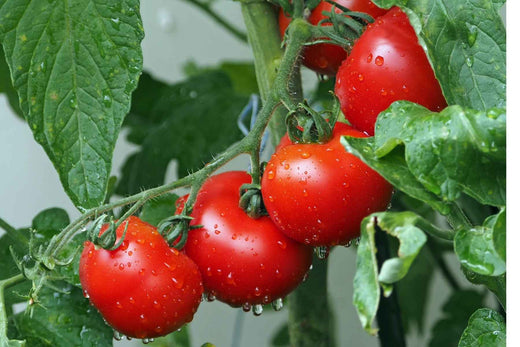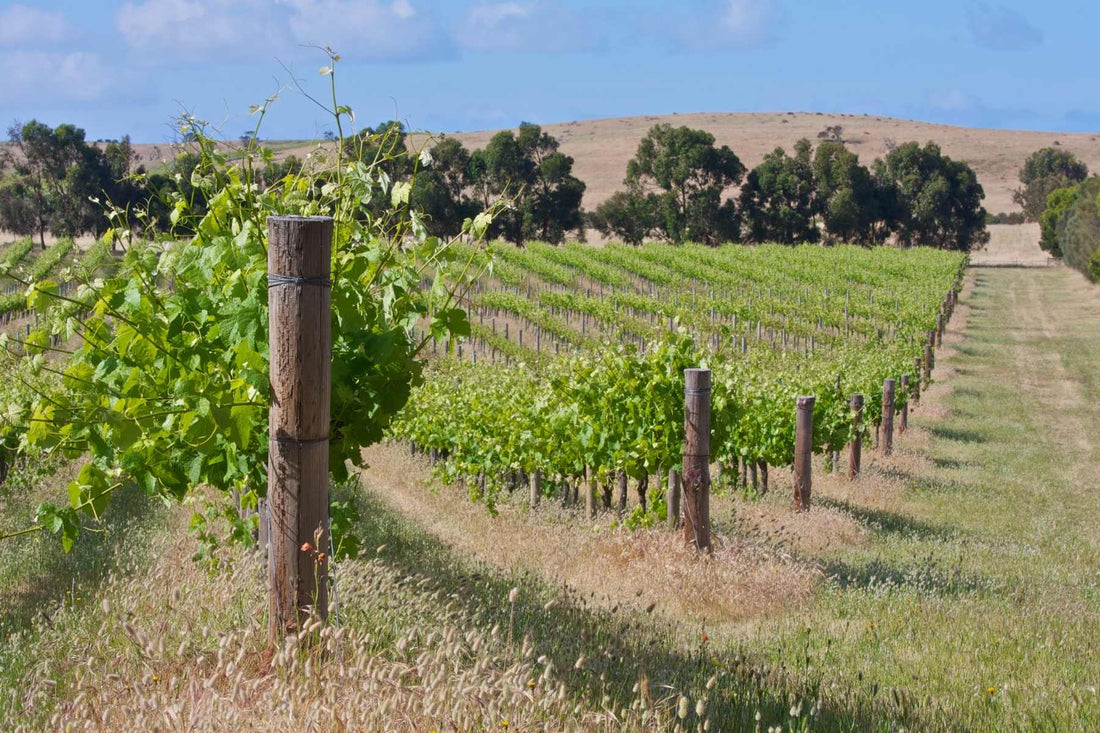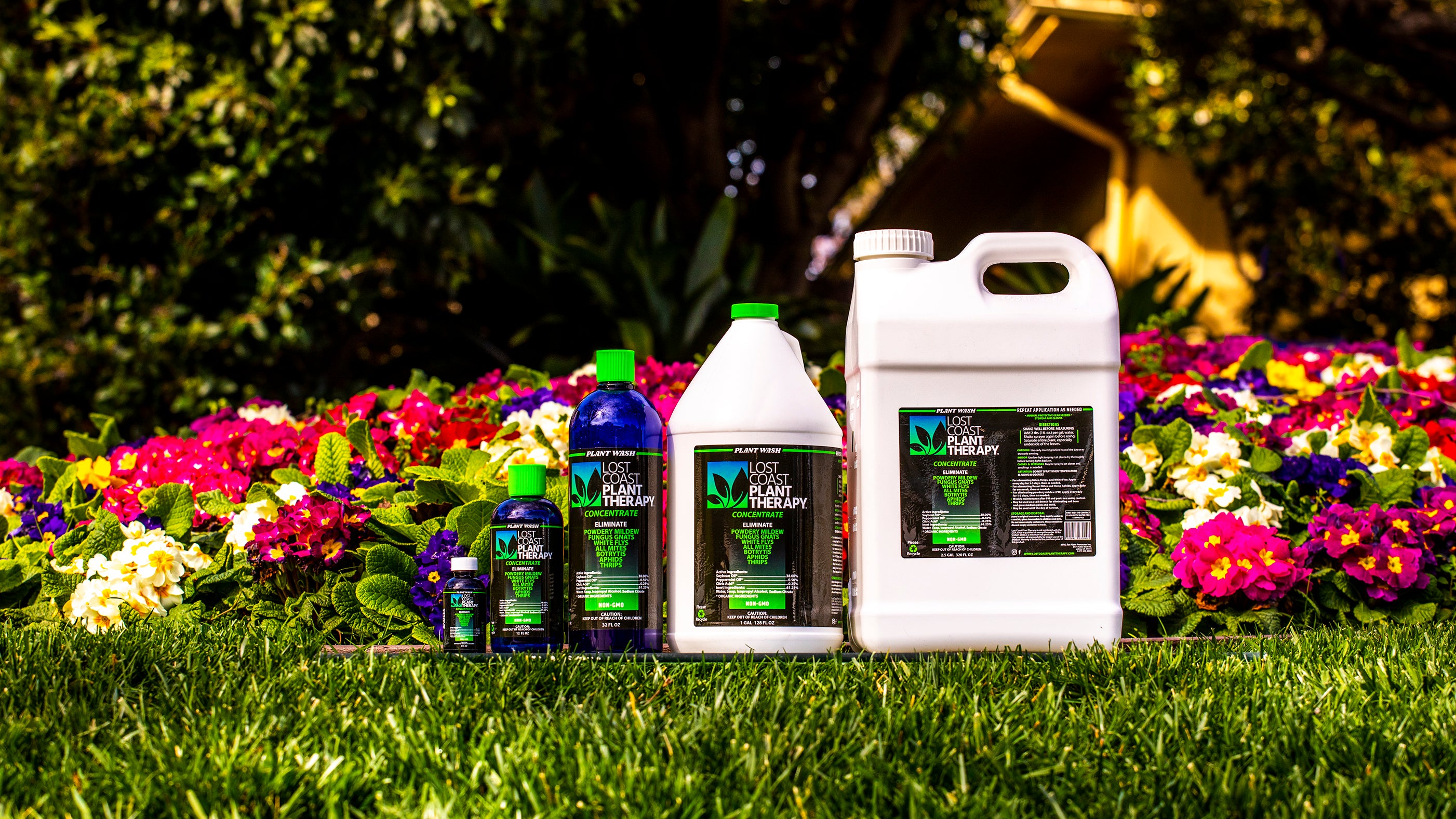Have you ever dreamed of biting into a juicy, homegrown tomato in the middle of winter? Or wondered if it's possible to grow tomatoes indoors, away from unpredictable weather? If so, you're in the right place.
Growing tomatoes indoors isn't just for those with south-facing windows or expansive sunrooms. With the right setup, anyone can transform a tiny corner of their home into a lush, tomato-filled oasis. Whether you're a seasoned gardener looking to bring your skills indoors or a beginner eager to plant the seeds of your first tomato seedlings, this guide has everything you need.
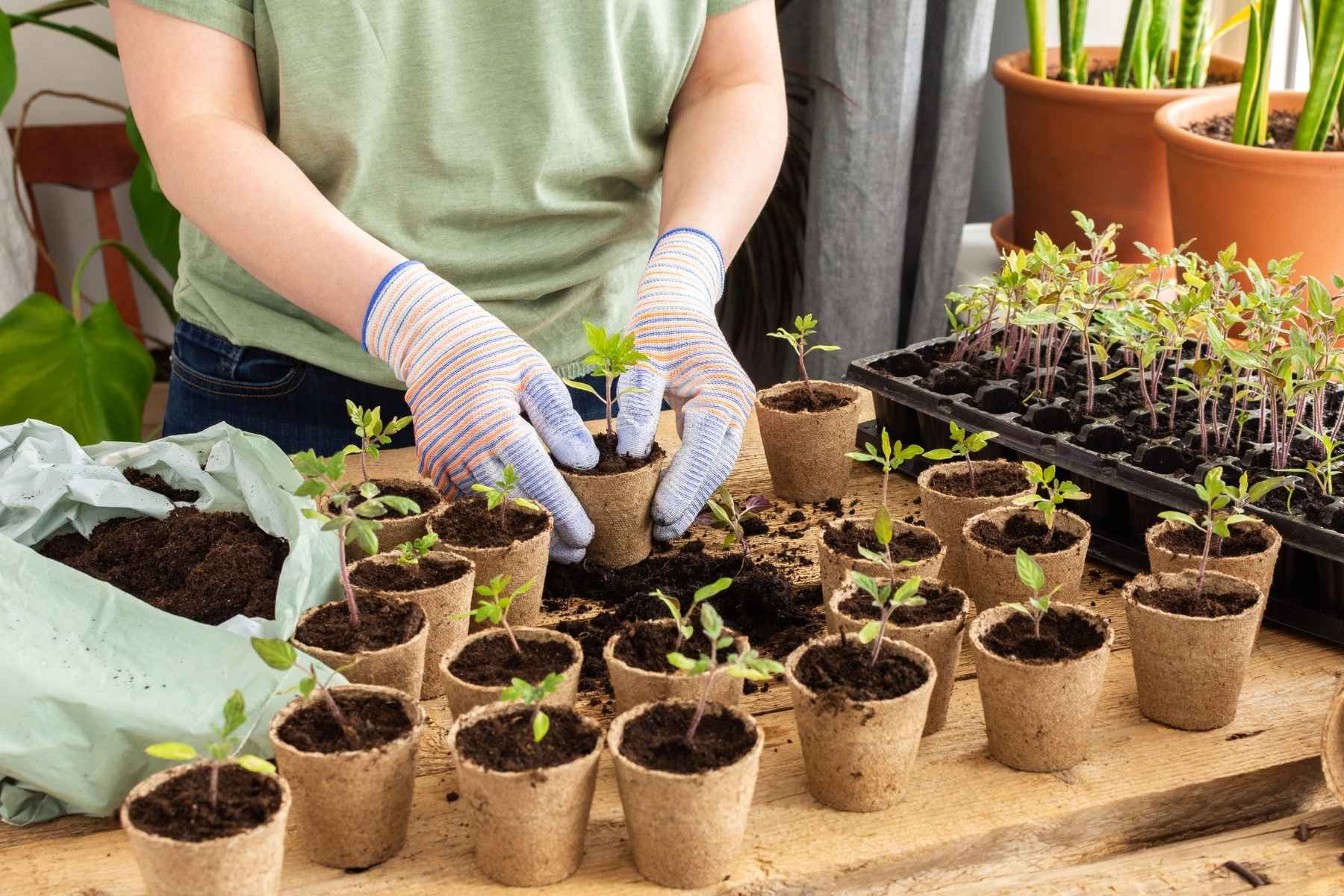
Why Grow Tomatoes Indoors?
Tomatoes typically thrive in warm conditions, and their growing season is naturally limited to the warmer months in most climates. However, by bringing the process indoors, you create a controlled environment where summer never ends for your tomato plants. No longer are you bound by the traditional growing seasons, with the right setup, you can harvest fresh, juicy tomatoes even on cold winter days.
This continuous growing cycle not only maximizes your yield but also allows you to experiment with different varieties that you might not otherwise be able to grow in your region.
Overcoming Limited Outdoor Space
For people that live in the city or those with limited outdoor space, indoor gardening opens up the world of homegrown produce. A sunny windowsill, a balcony, or even a dedicated grow light setup can transform any small space into a productive garden. This accessibility means that anyone can enjoy the process of growing tomatoes, regardless of their living situation.
Healthier Plants and Produce
Indoor gardening allows for closer monitoring and control over the plants' environment, which can help maintain optimal growing conditions for strong plant development.
See 10 common garden pests and how to prevent and control them here.

How to Grow Tomatoes Indoors with Lights
The key to successfully growing tomatoes indoors lies in replicating the outdoor conditions that tomatoes thrive in, particularly in terms of light. Tomatoes require a lot of light to grow and produce fruit — ideally, six to eight hours of direct sunlight a day. In the absence of natural sunlight, or to supplement it during shorter days, grow lights become an essential part of indoor tomato gardening.
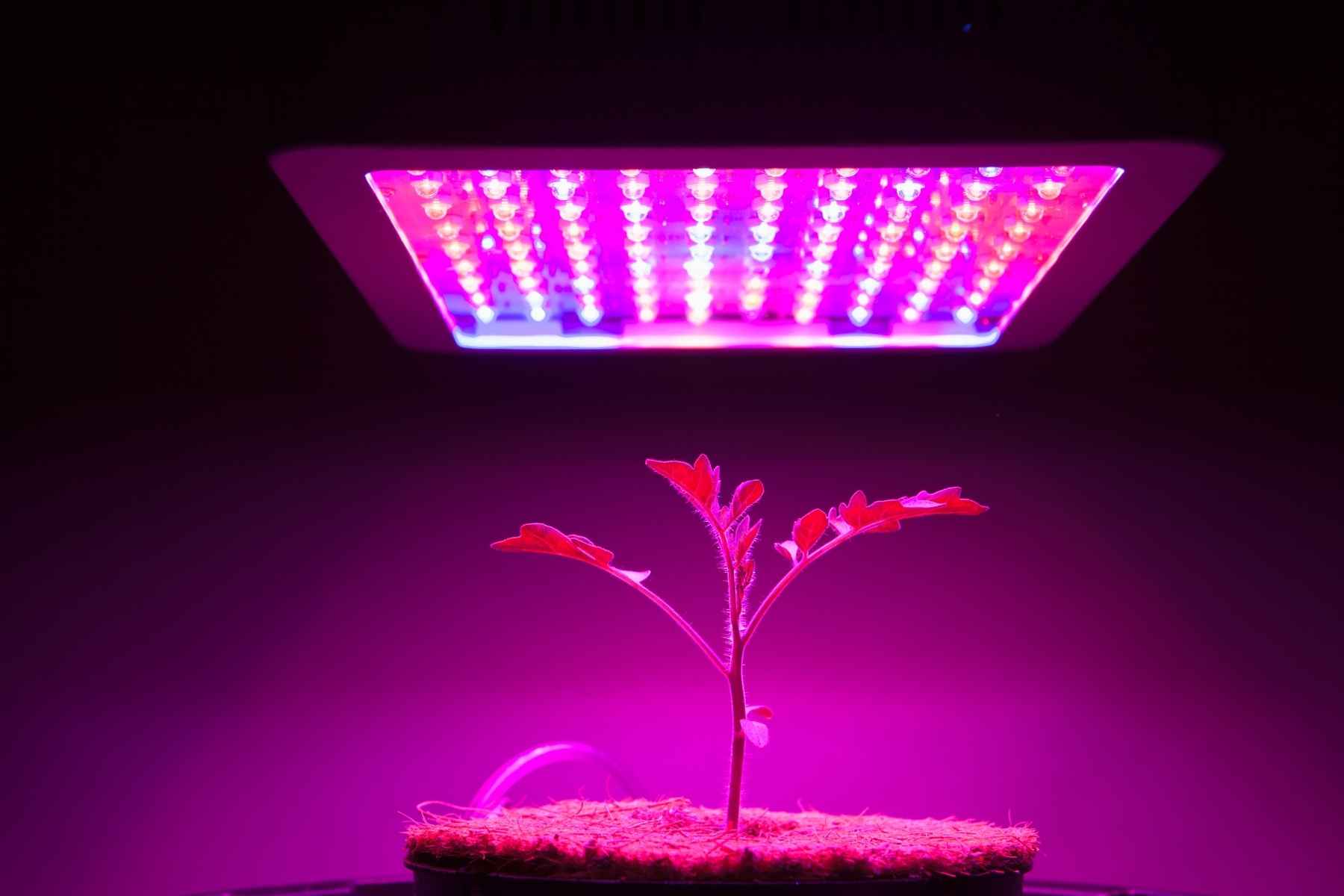
Choosing the Right Grow Lights
LED grow lights are highly recommended for indoor tomato gardening due to their efficiency and the broad spectrum of light they provide. Fluorescent lights, especially T5 or T8 bulbs, are also a good option, particularly for seedlings. The light spectrum is crucial for plant growth, with blue light promoting vegetative growth and red light encouraging flowering and fruiting. Adjustable and spectrum-specific LED panels are ideal as they can be tailored to the plant's growth stage.
After your tomato seeds have sprouted, they'll need plenty of light to grow strong and healthy. Young tomato plants are like sun worshippers, thriving under bright conditions that mimic the intensity of full sunlight.

Positioning and Timing
The positioning of grow lights is critical. They should be placed close enough to the plants to mimic the intensity of sunlight but far enough away to prevent overheating or light burn. A general rule of thumb is to start with the lights about 2-3 inches above the plants, raising the lights as the plants grow.. Most grow lights come with adjustable chains or stands for this purpose.
For timing, aim to provide your indoor tomato plants with at least six to eight hours of light per day. Using a timer can help regulate light cycles, ensuring your plants receive a consistent amount of light.
Aim to provide your tomato plants with 12-16 hours of light per day, followed by a dark period of 8-12 hours to mimic natural day and night cycles. Using a timer can easily help manage this light schedule.
Starting from seed, you can have fresh tomatoes in as little as a few months, continuing indefinitely with proper care. This continuous cycle not only provides a steady supply of tomatoes but also allows for experimenting with different varieties, some of which may become your new favorites!
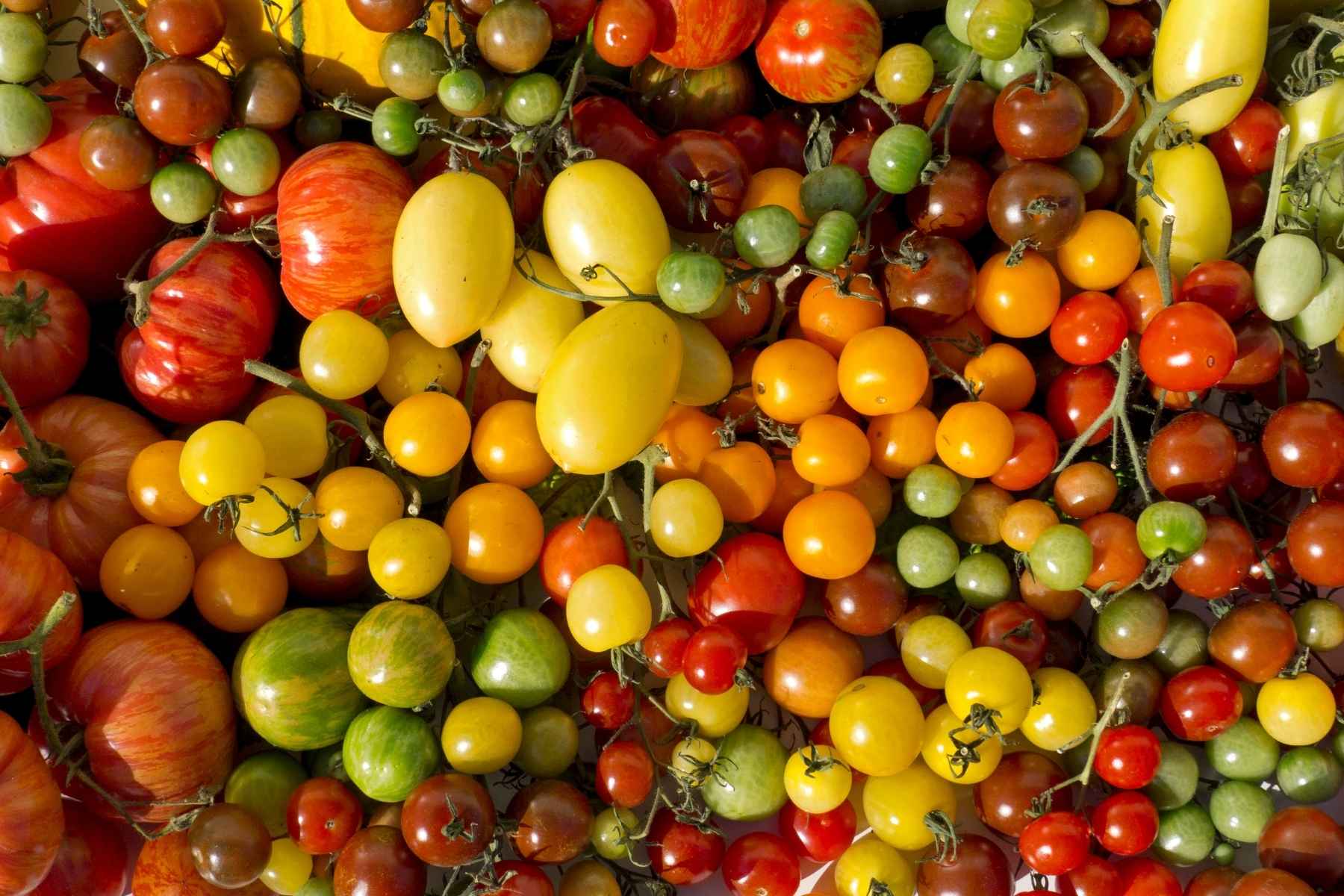
Choosing the Right Tomato Varieties
Selecting the right variety of tomato to grow is like choosing the right partner for a dance — it can make all the difference in your journey towards a bountiful harvest. Tomatoes come in two main growth habits: determinate and indeterminate, each with its unique characteristics and suitability for indoor gardening.
Determinate vs. Indeterminate Tomatoes
Determinate tomatoes, often referred to as "bush" tomatoes, grow to a certain height and then stop, focusing their energy on producing all their fruit in a relatively short period. This characteristic makes them ideal for gardeners who wish to harvest all at once. Due to their compact size, determinate varieties are well-suited to container gardening, making them a great choice for indoor environments where space is at a premium.
On the other hand, indeterminate tomatoes are the "vines" of the tomato world, growing continuously and producing fruit throughout the growing season until halted by frost or a lack of light. While they require more maintenance, such as staking or caging to support their growth, indeterminate varieties offer the allure of fresh tomatoes over a longer period, which can be particularly appealing when growing indoors.
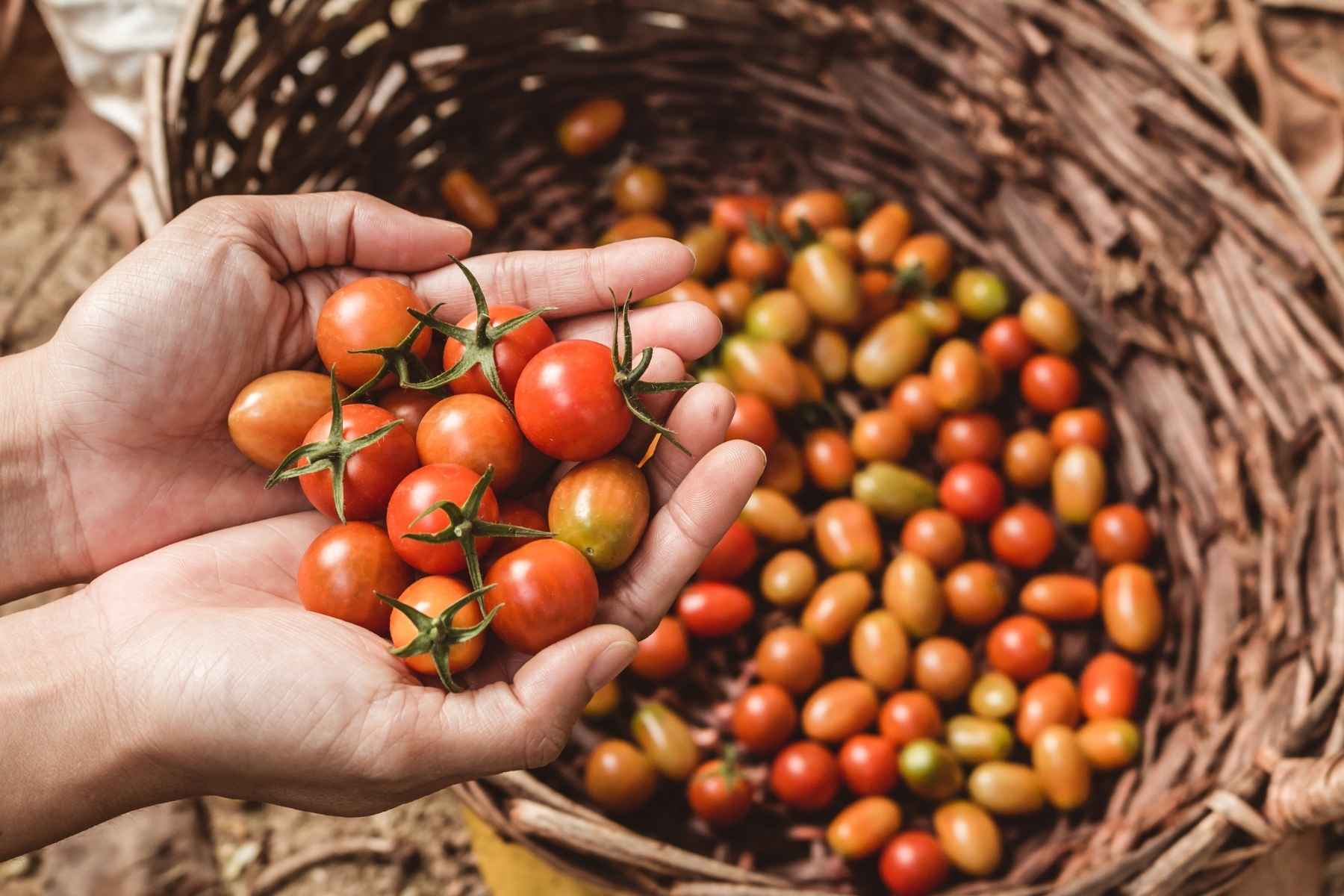
Recommended Varieties for Indoor Gardening
For indoor gardening, cherry tomatoes and dwarf varieties are often the stars of the show. Cherry tomatoes, such as 'Tiny Tim', 'Sweet Million', or 'Tumbling Tom', are not only adorable but also prolific producers, perfect for the limited spaces of indoor gardens. Their small size means they can thrive in pots and containers, and their continuous yield ensures a steady supply of fresh tomatoes.
Dwarf varieties are also a fantastic choice for indoor growers. Bred specifically for container gardening, these plants are compact yet vigorous, capable of producing full-sized tomatoes on smaller plants. Varieties like 'Dwarf San Marzano' or 'Dwarf Sweet Sue' offer the taste and quality of their larger counterparts without requiring the space that traditional tomato plants would.
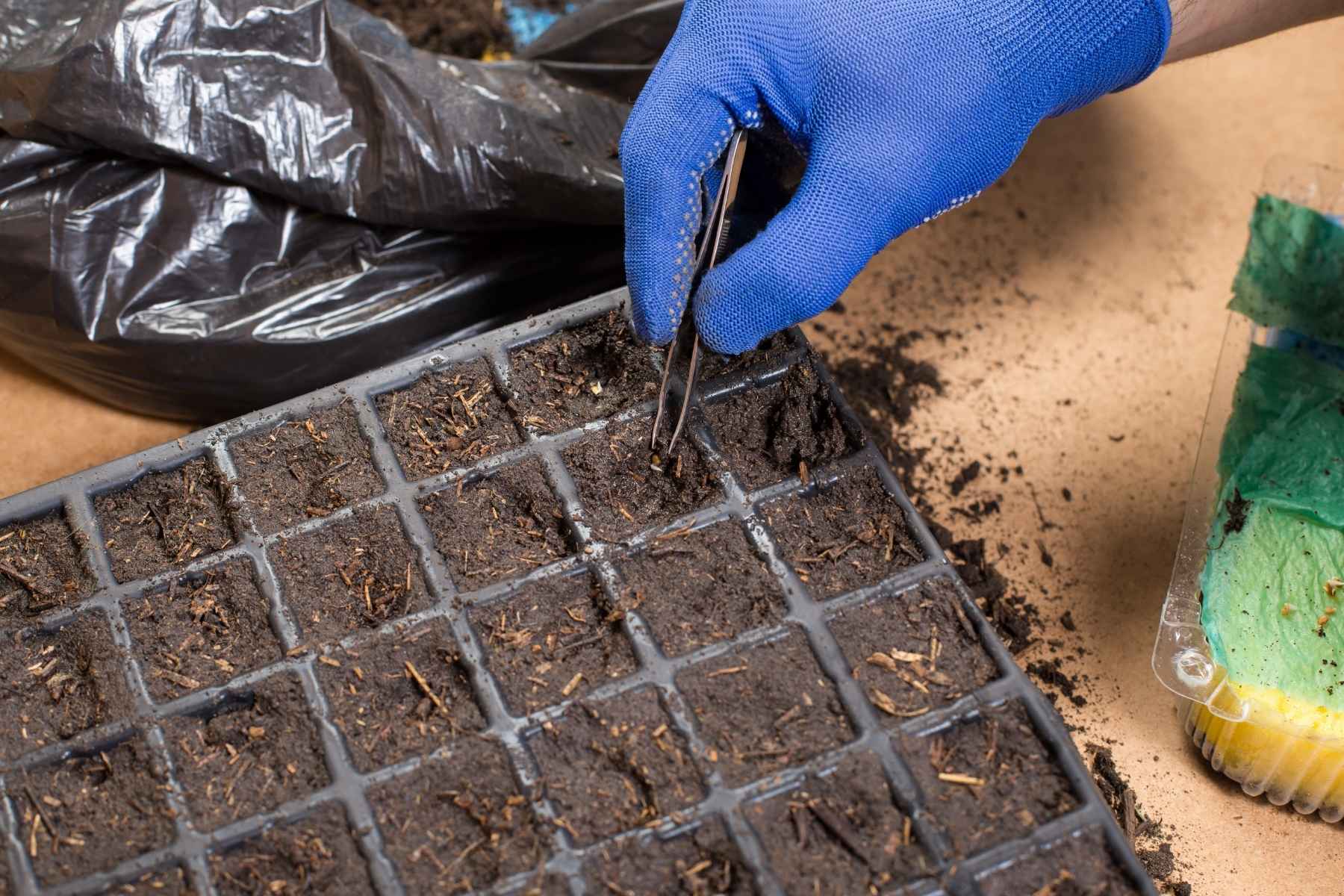
Planting Your Tomato Seeds
Your indoor tomato gardening journey begins with planting your tomato seeds. This initial stage is filled with anticipation and promise, as those tiny seeds hold the potential for lush vines brimming with juicy tomatoes. Let's ensure you start off on the right foot, nurturing those seeds into thriving plants.
Preparing to Plant
First, choose a high-quality potting mix — light, fluffy, and designed for container use. This mix should provide the ideal home for your seeds, offering them the nutrients, air, and moisture they need to sprout successfully.
Fill small pots or seed-starting trays with your chosen mix, leaving a little space at the top. You'll want to plant your tomato seeds about ¼ inch deep, a perfect depth that allows for easy emergence but sufficient coverage to maintain moisture. Gently press the seeds into the mix and lightly cover them, ensuring they have good contact with the soil but aren't buried too deeply.
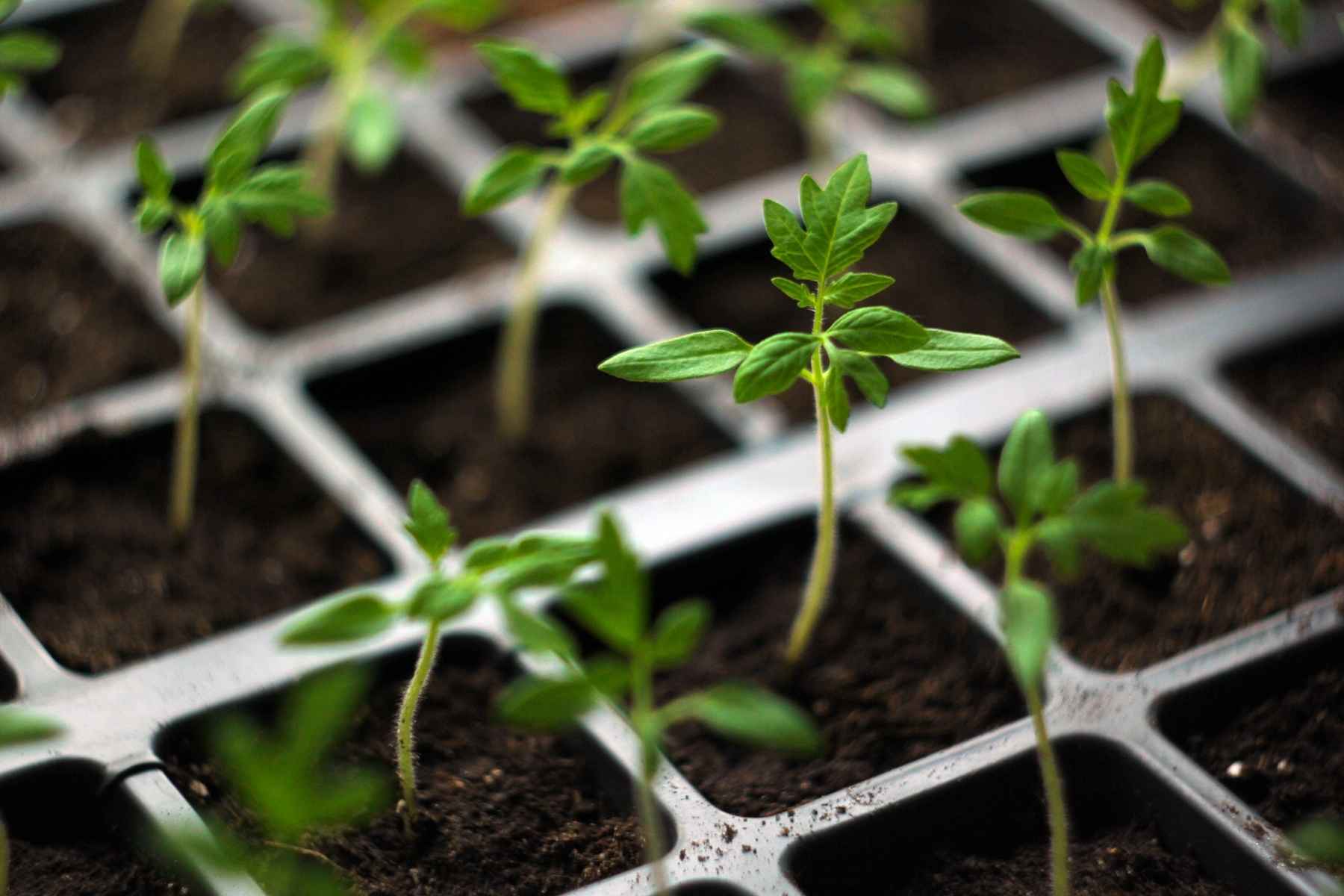
Moisture and Temperature
After planting, lightly water the soil, ensuring it's moist but not waterlogged. Consistent moisture is key during germination, so keep the soil evenly damp. Covering the pots or trays with plastic wrap or a clear dome can help retain moisture and warmth, creating a mini greenhouse effect.
The ideal temperature for tomato seed germination is between 70-80°F. This warmth is crucial, as it signals to the seeds that conditions are right for growth. If your home is on the cooler side, a heat mat can be super helpful for the germination phase (once your seeds have sprouted, they typically won't need the extra warmth).
Placing your pots or trays on a heat mat set to the right temperature range can significantly improve germination rates and speed.
After germination, aim to maintain daytime temperatures around 65-75°F and slightly cooler nighttime temperatures of 60-65°F. These conditions mimic the natural temperature fluctuations tomatoes would experience outdoors.
Excessive heat can stress plants and hinder pollination, while too cool temperatures can slow growth and fruit development. If you're using grow lights, they can generate heat, so monitor the temperature closely to ensure it remains within the ideal range. A small fan can help circulate air and maintain consistent temperatures around your plants, besides promoting stronger stem growth through gentle movement.
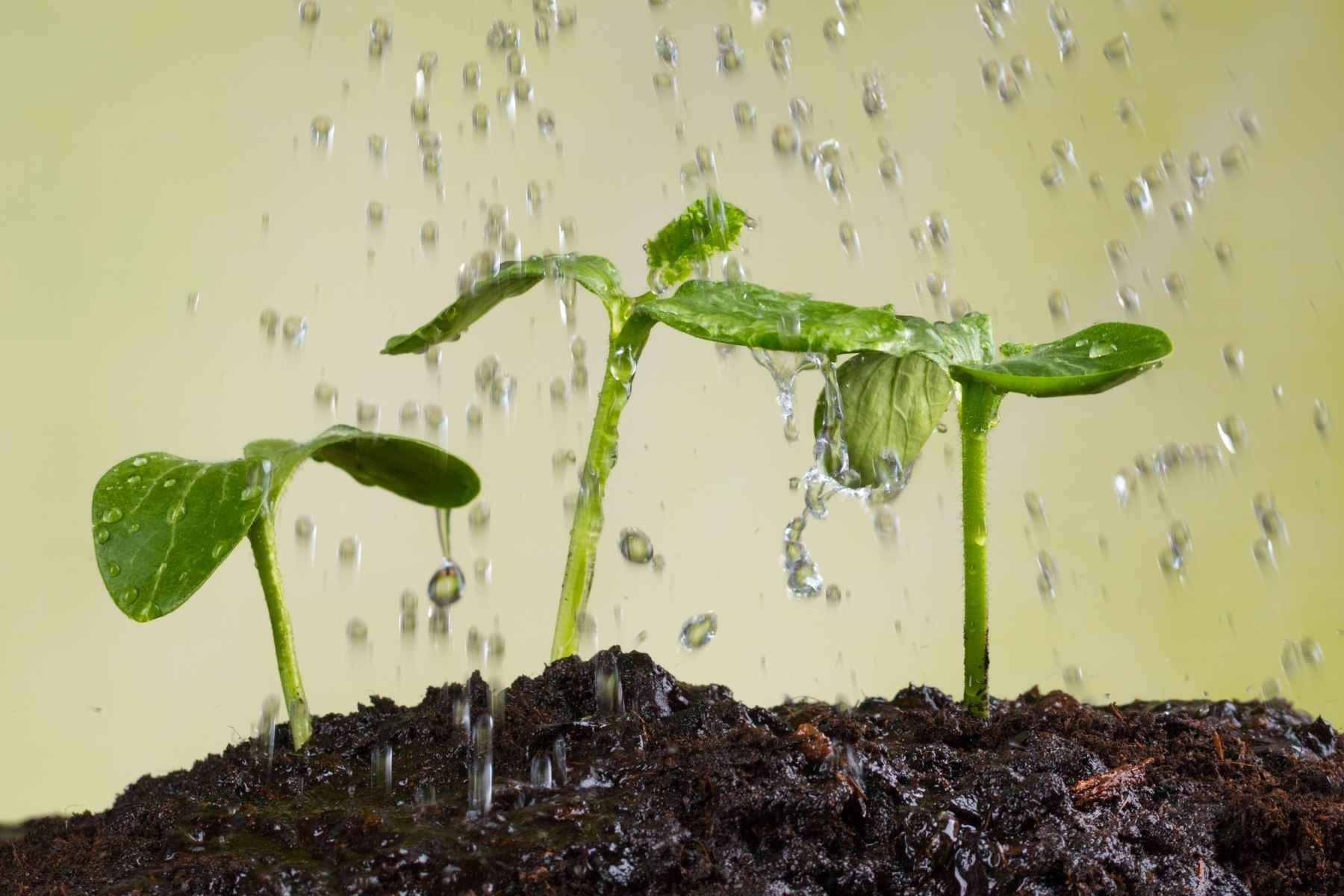
Watering and Fertilizing Your Indoor Tomatoes
Navigating the waters of indoor tomato gardening involves understanding the delicate balance between too little and too much care, especially when it comes to watering and fertilizing. These aspects of plant care are pivotal in ensuring your tomatoes not only survive but thrive, producing lush foliage and bountiful fruits.
Watering: It's a Balance
Watering your indoor tomatoes correctly is like performing a well-rehearsed dance — it requires precision, understanding, and sometimes a bit of intuition. The goal is to maintain evenly moist soil without crossing into the realm of waterlogging, which can lead to root rot and other water-related diseases.
Check the soil before watering: Stick your finger about an inch into the soil. If it feels dry, it's time to water, if it still feels moist, wait a day or two. This simple test helps prevent overwatering.
Water deeply but infrequently: When you do water, ensure it reaches the roots where it's most needed. Allow the water to drain thoroughly, ensuring that no water is left standing in the saucer beneath the pot, as this can cause root issues.
Morning is best: Watering in the morning allows any moisture on the leaves to dry out over the course of the day, reducing the risk of fungal diseases.
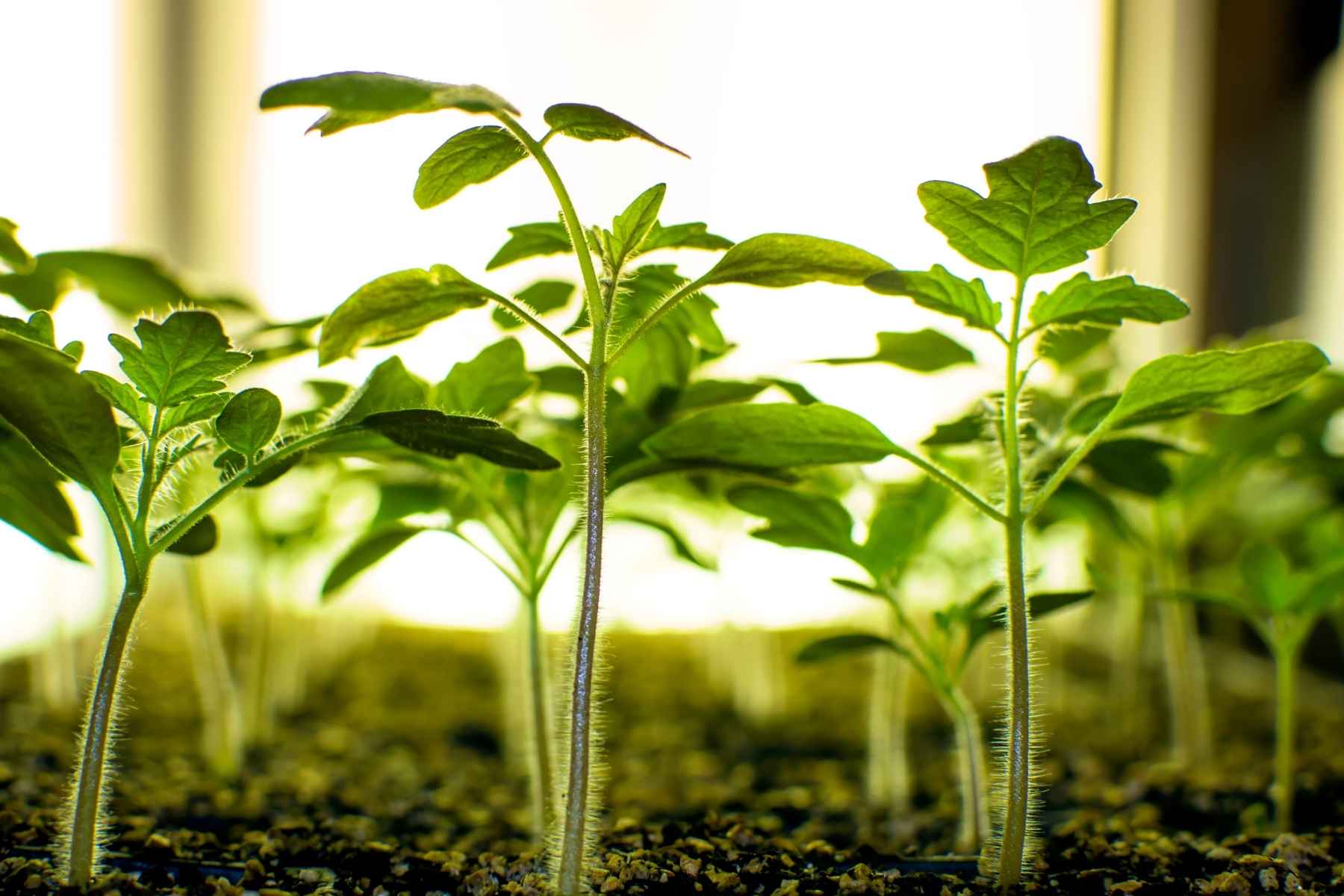
Fertilizing: Feeding The Hunger
Tomatoes are renowned for being heavy feeders, requiring a steady supply of nutrients to support their vigorous growth and fruit production. Indoor tomatoes, in particular, depend on you for their nutrition, as they don't have access to the soil life that outdoor tomatoes do.
Start with a good foundation: Begin with a high-quality potting mix that includes some compost for initial nutrients. As your plants grow, they will quickly deplete these nutrients.
Choose the right fertilizer: Look for a balanced, water-soluble fertilizer designed for vegetables or tomatoes. These fertilizers typically have a balanced ratio of nitrogen (N), phosphorus (P), and potassium (K), such as 10-10-10.
Follow a feeding schedule: Start fertilizing your plants about two weeks after transplanting or when they first show signs of growth. Continue to fertilize every two weeks, following the product's instructions for dilution and application rates.
Adjust based on growth stages: As your plants transition from vegetative growth to flowering and fruiting, they require different nutrient balances. Consider switching to a fertilizer with less nitrogen and more phosphorus and potassium to encourage blooming and fruit development.

Pruning and Supporting Your Tomato Plants
Pruning and supporting your tomato plants are not just acts of maintenance but are gestures of care that encourage your plants to focus their energy on producing fruits rather than sprawling aimlessly. These practices are especially essential in an indoor environment, where space is limited and air circulation is crucial.
Pruning: Encouraging Healthy Growth
Pruning helps manage your tomato plants' growth, directing energy towards fruit production and maintaining a healthy, open structure for air circulation.
Remove suckers: Suckers are the small shoots that grow in the axils between the stems and the leaves. For indeterminate varieties, removing suckers below the first flower cluster can prevent the plant from becoming too bushy and helps improve air circulation and light penetration.
Top the plant: To encourage the plant to focus its energy on ripening existing fruit, you can "top" it by cutting off the top growth when it reaches the desired height or to ensure it fits within your indoor space.
Thin out leaves: Removing some of the older leaves, especially those near the bottom of the plant, can also improve air circulation and reduce disease risk. It also allows more light to reach the lower parts of the plant, which can help with fruit ripening.

Supporting: The Backbone of Your Tomato Plants
Providing support for your tomato plants is very important, especially for indeterminate varieties, which can become quite tall and heavy with fruit.
Cages and stakes: Tomato cages or sturdy stakes can provide the necessary support for your plants to grow upwards. Secure your plants to the support with soft ties, ensuring not to damage the stems.
Adjust as they grow: Keep an eye on your plants as they grow, adding additional ties or adjusting the support as needed to keep up with their growth.

Pollination Techniques for Indoor Tomatoes
Unlike outdoor gardens where bees and the wind naturally assist in pollination, indoor environments require a bit more intervention to ensure your tomato plants bear fruit.
The Self-Pollinating Nature of Tomato Plants
Tomatoes are self-pollinating, meaning each flower contains both the male (stamen) and female (pistil) parts needed to produce fruit. In outdoor settings, the gentle sway of the plant in the wind or the buzzing of bees is enough to shake the pollen from the stamen to the pistil. Indoors, though, we might need to lend a helping hand to mimic these natural forces.
Manual Pollination Techniques
Shake the plant gently: One of the simplest methods is to lightly shake your tomato plant, mimicking the wind's action. A gentle tap on the plant's support stake or a slight shake of the main stem once or twice a day during flowering can help distribute the pollen.
Use an electric toothbrush: For a more targeted approach, touch the back of a flowering stem with an electric toothbrush. The vibrations are excellent for shaking loose the pollen, closely imitating the buzz pollination technique used by bees.
The Q-tip method: For meticulous gardeners, a Q-tip or a small paintbrush can be used to transfer pollen from one flower to another gently. This method allows for a bit more control and ensures that pollen reaches the pistil.
These manual pollination techniques can be surprisingly effective and offer a unique opportunity to connect with your plants. Observing the flowers and ensuring each one has the chance to set fruit can become a meditative and fulfilling part of your gardening routine.
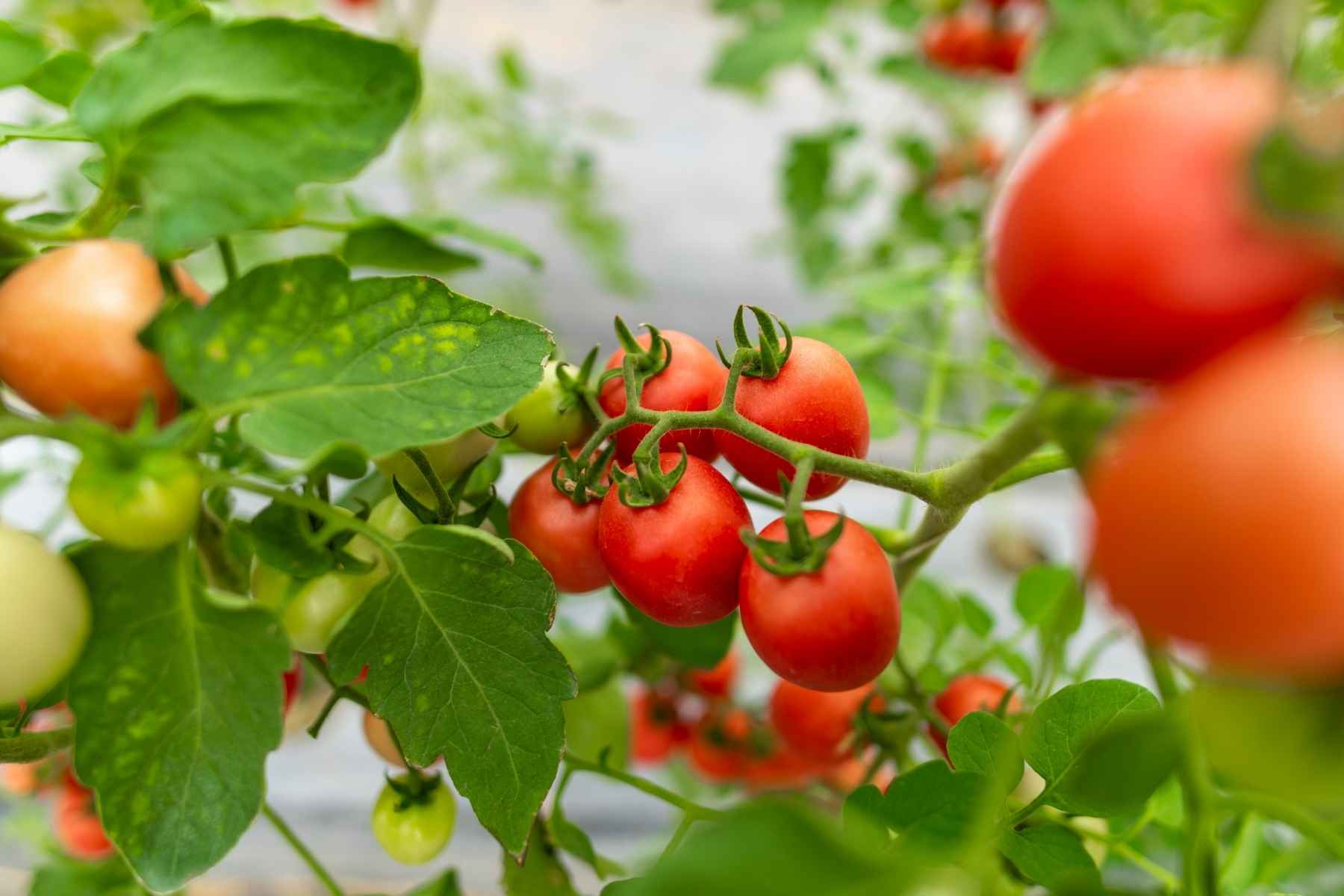
Troubleshooting Common Indoor Tomato Growing Problems
Even the most diligent indoor gardeners can encounter their share of challenges. Recognizing and addressing common issues early can make a significant difference in the health and productivity of your tomato plants. Let's explore some typical problems and how to solve them.
Blossom End Rot
Blossom end rot is a disheartening condition where the end of the tomato farthest from the stem becomes darkened, sunken, and leathery. It's caused by calcium deficiency, often due to uneven watering practices or poor soil.
Solution: Ensure consistent watering to maintain even soil moisture. Using a calcium supplement can help, but often, the key is improving water management. Using pots with good drainage reduces the risk of overwatering.
Leggy Seedlings
Leggy seedlings, characterized by tall, thin stems, are usually the result of insufficient light. They stretch towards the light source, compromising their strength.
Solution: Position grow lights closer to your seedlings, no more than a few inches away, and ensure they receive 16-18 hours of light daily. A rotating fan can also help by providing a gentle breeze, encouraging stronger stem growth by simulating natural outdoor conditions.
Lack of Fruit
A lack of fruit production can be frustrating after all your care. This issue can stem from inadequate pollination, too much nitrogen, or not enough light.
Solution: For pollination, gently shake your plants or use an electric toothbrush to vibrate the flowers, encouraging pollen transfer. If you suspect too much nitrogen, switch to a fertilizer lower in nitrogen and higher in phosphorus and potassium, which promote flowering and fruiting. Lastly, ensure your plants are getting enough light, adjusting your grow lights as needed.

Identifying and Controlling Common Pests and Diseases
Even the most carefully tended indoor garden can encounter the occasional pest or disease. Recognizing and managing these challenges promptly can keep your tomato plants healthy and productive.
Common Issues When Growing Indoor Tomatoes
Powdery Mildew: Powdery mildew is a fungal disease that presents as white to grayish powdery spots on the leaves and stems of plants. It thrives in both high humidity and dry conditions, especially when nights are cool and days are warm. While it doesn't usually kill plants outright, it can weaken them by interfering with photosynthesis, leading to poor growth and reduced yield.
Aphids: These tiny pests can be found in clusters, often on the undersides of leaves. They sap the vigor from plants by sucking on the sap, weakening your tomatoes over time.
Whiteflies: Similar to aphids, whiteflies feed on plant sap and can cause yellowing leaves and stunted growth. They also excrete a sticky substance known as honeydew, which can lead to sooty mold.
Spider Mites: Spider mites are tiny, spider-like pests that are often too small to see with the naked eye. They typically reside on the undersides of tomato plant leaves, spinning fine webs and feeding on the plant juices. This results in yellow, speckled leaves, and severe infestations can significantly weaken or even kill plants. Spider mites prefer hot, dry conditions and can rapidly reproduce in such environments, making them a formidable pest for indoor tomatoes.

Lost Coast Plant Therapy - Natural Plant Protector for Indoor Gardens
Our Natural Plant Protector offers a gentle yet effective solution for controlling mold and soft bodied pests without relying on conventional pesticides when used as directed. Maintaining a healthy garden involves preventive care, fostering an environment where plants can grow with reduced risk of pest and disease issues.
Protecting Tomato Plants from Pests and Diseases
Lost Coast Plant Therapy is formulated with natural and organic ingredients, making it safe when used as directed for use on edible plants while effectively controlling common pests like aphids, whiteflies, and spider mites. It also helps manage diseases by keeping the foliage clean and less hospitable to fungi and bacteria.
Application: For preventive care, spray your plants lightly every two weeks, ensuring to cover both the upper and lower surfaces of the leaves. If you're dealing with an active infestation or disease, increase the frequency to once a week or more, monitoring your plants for signs of improvement.
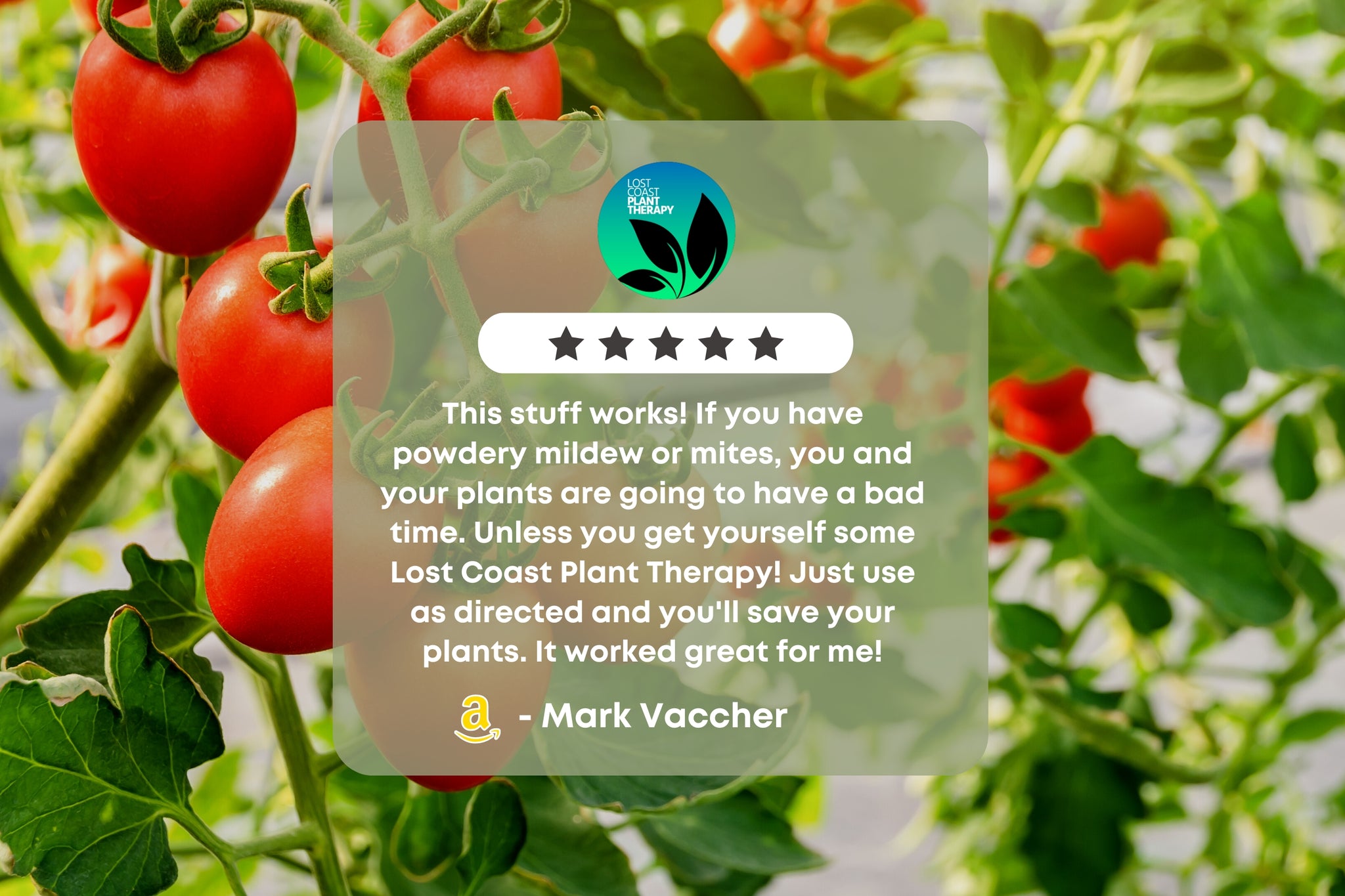
Tips for Regular Maintenance Sprays
Timing: Apply Lost Coast Plant Therapy while the main lights are off. Allow plants to dry thoroughly before lights go back on.
Coverage: Make sure to spray the stems and undersides of leaves, where pests and diseases often hide.
Dilution: Follow the dilution instructions on the label carefully to ensure effectiveness while keeping your plants safe when used as directed.
See Instructions and How It Works.
Incorporating our Natural Plant Wash into your regular gardening routine can significantly reduce the likelihood of pest and disease issues. It's a gentle yet effective way to keep your indoor tomato plants healthy, focusing on prevention rather than cure. Plus, you'll have the peace of mind that comes from using a product that, when used as directed, is suitable for your plants and home environment.

Harvesting Your Tomatoes
Tomatoes are ripe and ready for harvest when they reach their full color—whether that's red, yellow, green, or purple—and feel slightly soft to the touch. The fruit should detach easily from the vine with a gentle twist. If you're unsure, taste testing a tomato or two can be a delightful way to determine ripeness.
Storing Tomatoes for Freshness
Once harvested, store your tomatoes at room temperature away from direct sunlight to preserve their flavor and texture. Refrigeration is only recommended if you need to extend their shelf life once they're fully ripe, but be aware it can affect their taste.
For tomatoes that you plan to use within a few days, a countertop or a pantry shelf offers the perfect spot. If you find yourself with an abundance of ripe tomatoes, consider making sauces or salsas, or even freezing them for future use.

Conclusion
Growing tomatoes indoors can be a great hobby and throughout this guide, we've explored how to create the ideal environment for your tomato plants to thrive, from the importance of indoor light to simulate the sun's rays, to the art of pollinating flowers to ensure a bountiful harvest of tomatoes.
Tomato plants like their roots in moist, well-drained soil and their leaves basking in light, mimicking outdoor conditions. By adjusting the height of your grow lights as the tops of the seedlings reach upwards and ensuring the soil is dry before watering again, you can foster healthy plant growth and prevent common indoor gardening issues.
Remember, whether you're growing cherry tomatoes on a windowsill or heirloom varieties under LED lights, the key to success lies in understanding the needs of your indoor tomato plants. They may become quite large, they may challenge you, but they will also reward you with the joy of harvesting tomatoes that you've nurtured from seed to fruit. With a bit of care, some light, our Natural Plant Protector and a dash of love, you can bring a piece of the outdoors inside, growing lush, vibrant tomatoes any time of year.
FAQ
How long does it take from seed to harvest for indoor-grown tomatoes?
The time from seed to harvest can vary based on the variety of tomato you're growing. Generally, it takes about 6 to 8 weeks for tomato plants to grow from seed to the stage where they're ready to be transplanted. After transplanting, it can take anywhere from 60 for fruit to mature and be ready for harvest, depending on the variety and growing conditions. For example, smaller varieties like 'Tiny Tim' may produce ripe fruit quicker than larger, beefsteak types. Ensuring your plants receive at least six hours of artificial light and consistent heat can help optimize growth and reduce the time from seed to harvest.
What do tomato plants require to grow successfully indoors?
Tomato plants require consistent light, warmth, moisture, and nutrients to thrive indoors. They should be placed under grow lights for at least six hours a day to mimic the sun's rays, which is crucial for their growth and fruit production. The temperature should be kept between 65°F and 85°F, with young seedlings especially benefiting from the lower end of this range. Water them when the soil feels dry an inch below the surface, and ensure the pot has good drainage to prevent waterlogging. Since tomatoes are heavy feeders, regular fertilization is essential once true leaves have appeared, using a balanced, water-soluble fertilizer every two weeks.
Can I use regular potting soil for my indoor tomatoes?
While you can start with regular potting soil, it's best to use a seed-starting mix filled with nutrients appropriate for indoor growing when planting your seeds. This mix is designed to provide the ideal texture and nutrient balance for young seedlings, promoting healthy root development and growth. Once the seedlings have developed their true leaves and are ready to be transplanted, you can move them to pots filled with a high-quality potting soil that's better suited to support the larger plant's nutritional needs.
How should I pollinate my indoor tomato plants to ensure fruit production?
Since tomatoes are self-pollinating, indoor plants often require a little help to ensure pollen moves from flower to flower. You can gently shake the main stem and branches of your plant to mimic the natural action of the wind or use an electric toothbrush to vibrate the flowers, which can help release the pollen. Another method is to manually transfer pollen between flowers using a small paintbrush or cotton swab. This should be done during the middle of the day when the pollen is most likely to be viable.
What are the most common pests for indoor-grown tomatoes, and how can I control them?
Aphids and whiteflies are common pests that can affect indoor-grown tomatoes. To control these pests, apply our Natural Plant Protector regularly as a preventive measure when used as directed, or more frequently if you notice an infestation. Always check the undersides of leaves and near the main stem, as these pests like to hide in these areas.
See more FAQ's here.
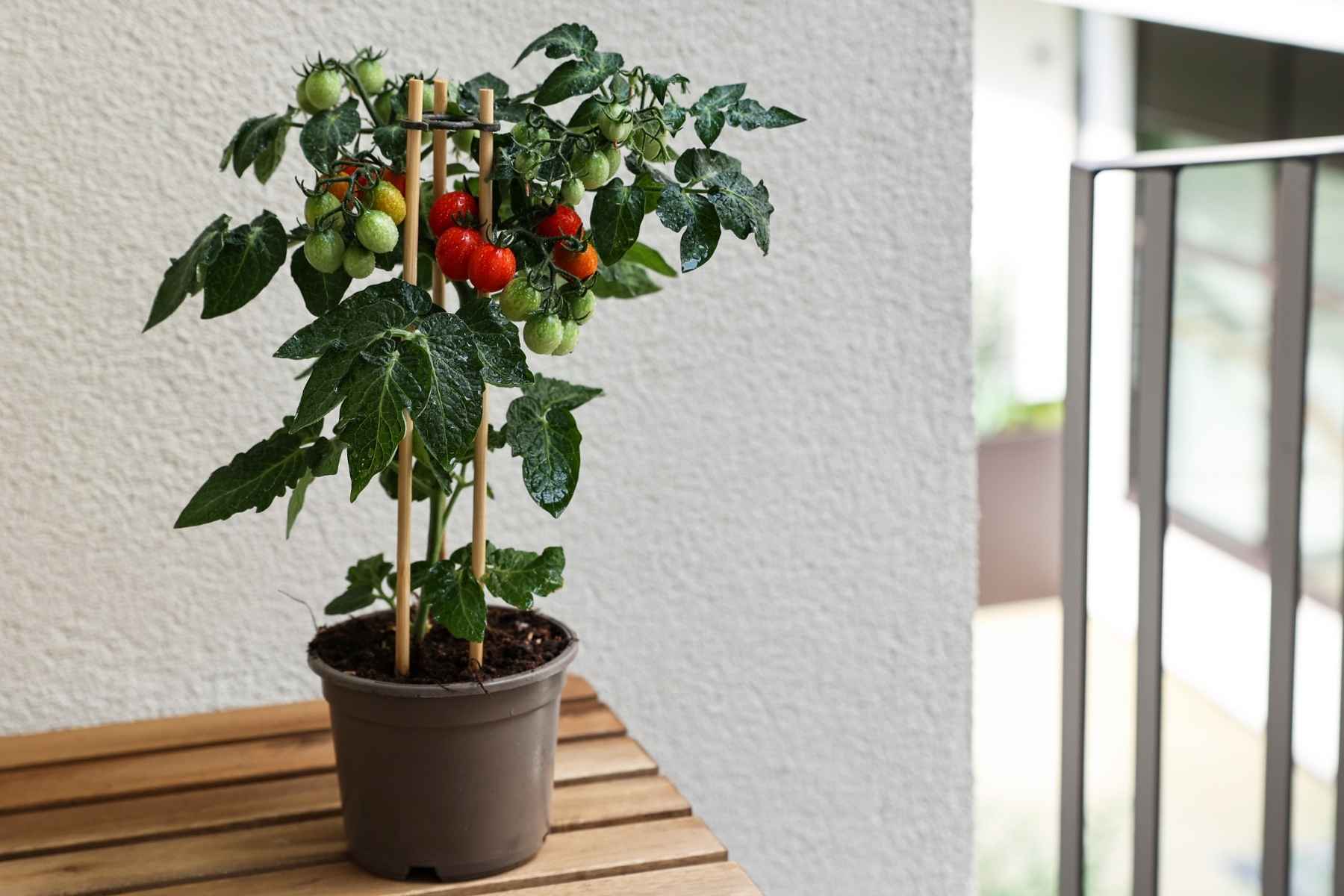
Additional Resources
How Much Sun Do Tomatoes Need? The Age Old Question
Ecological Network Analysis of Growing Tomatoes in an Urban Rooftop Greenhouse


